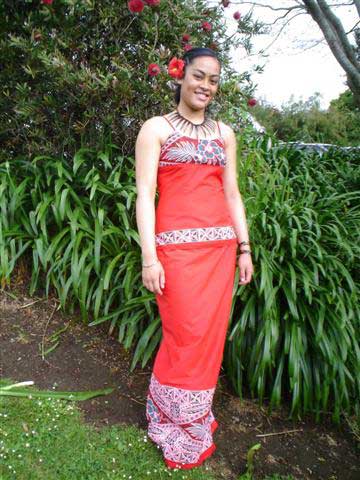Marcellin College
Fa’a Samoa: The Samoan Way
The Pe’a (Samoan Tattoo)
by Leilani
My name is Leilani Matisi and in June of 2006, I travelled to Samoa for the first time to witness my uncle receive a Matai title from the village of Leumoenga. Before receiving this title he first decided to get the traditional Samoan tattoo known as the pe’a. This took place here in New Zealand before he left to travel to Samoa for the ceremony.
Traditional Samoan tattooing of the pe’a takes many weeks to complete and is a very painful experience for the person receiving the tattoo. It used to be a necessary procedure before a man could receive a Matai title but this is no longer the case. These days not just men can receive tattoos but women also although their designs differ from the men’s. Tattooing of women is also not as ritualised as the men’s one.
The process is usually done with lots of singing in the Samoan language and taboos being placed on the person receiving the tattoo. It is possible to complete a pe’a within 10 days. Five sessions and then a day’s break in between to let any swelling settle before continuing. On the last day the taboo will be removed.
There are a number of stages involved in the tattooing process. The first thing to decide is how high the tattoo will rise i.e. the part of the design that will show above the lavalava which is usually worn during a tattoo. After the top designs are finished, the next to be added to the tattoo is something called ‘saemulu’, which is a pattern and can vary in number, depending on status.
Below this pattern, more designs are added and taken right round the body making a band. Next bands are added which go around the top of the thighs. This must be a very painful experience. Next the solid areas of the tattooing are completed. These become all the shaded areas. During the final session the centre of the thigh up to the inner groin is tattooed. This includes the abdomen and the navel. This is said to be the most painful part.
During the process of the tattooing the tattooist can be assisted by up to six helpers, all of whom wish to become masters themselves. Women sit around the person being tattooed and hold them down to restrict movement. They sing to help to keep him occupied and to keep his mind away from the pain and to avoid crying which is considered disgraceful.
When I arrived in Samoa it was hot. I was greeted with a smile and with a lot of respect. As a visitor to the island, where my ancestors came from, I felt very welcomed. Where the ceremony was to be held, it was all nicely set up with many beautiful bright colours of lavalavas, flowers, and traditional arts and crafts. When the ceremony started, speeches were made by the high chiefs from the other villages that were present. They spoke in the Samoan language and a little bit in English for those who do not understand, which are usually the overseas guests, like me.
Money was exchanged between the villages. It was handed over by the young females. I was one of the females. We had to walk over to the chiefs of the other villages, holding the money over our heads, which was our way of showing respect. We also exchanged fine mats, which we first had to display to everybody. When all our hard work had been done and the ceremony was finished we were all happy and just wanted to celebrate.

The photograph shows me in the clothes that were especially created by my aunt for this occasion.
